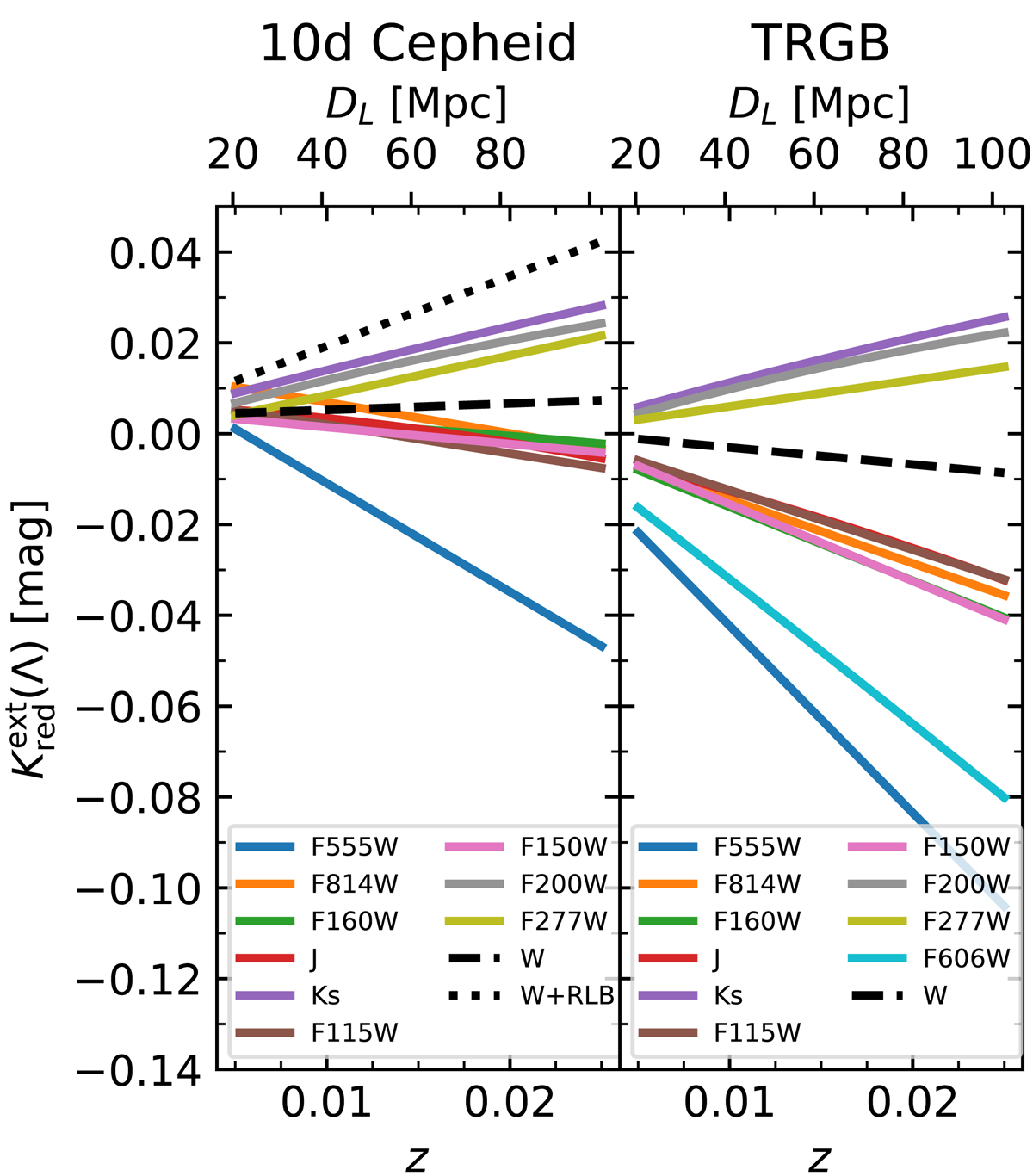Fig. 5.

Download original image
Illustration of extinction-dependent reduced K corrections as a function of redshift for a 10 d Cepheid listed in Table 1 and stars near the TRGB listed in Table 3. The results shown assume host reddening of 0.20 mag and 0.00 mag for Cepheids and TRGB stars, respectively. For Cepheids, ![]() includes a correction for extinction based on apparent color excess. The NIR Wesenheit function and Ks band exhibit the weakest z dependence for Cepheids and remain generally very close to 0. For Cepheids, the run of
includes a correction for extinction based on apparent color excess. The NIR Wesenheit function and Ks band exhibit the weakest z dependence for Cepheids and remain generally very close to 0. For Cepheids, the run of ![]() is difficult to discern due to overlapping lines for filters with wavelengths between F814W and F160W. TRGB K corrections overlap for filters F150W and F160W (green and light pink), as well as for the F115W and 2MASS J band (brown and red). The top x axis shows luminosity distance, DL (outer tick marks), in addition to redshift (inner ticks). The dotted black line shows the combination of
is difficult to discern due to overlapping lines for filters with wavelengths between F814W and F160W. TRGB K corrections overlap for filters F150W and F160W (green and light pink), as well as for the F115W and 2MASS J band (brown and red). The top x axis shows luminosity distance, DL (outer tick marks), in addition to redshift (inner ticks). The dotted black line shows the combination of ![]() and RLB (Eq. (17)) for the Wesenheit function, where
and RLB (Eq. (17)) for the Wesenheit function, where ![]() and RLB add with the same positive sign. The Kext(WH, VI) for TRGB stars and Cepheids have opposite signs due to the intrinsic color difference of these types of stars.
and RLB add with the same positive sign. The Kext(WH, VI) for TRGB stars and Cepheids have opposite signs due to the intrinsic color difference of these types of stars.
Current usage metrics show cumulative count of Article Views (full-text article views including HTML views, PDF and ePub downloads, according to the available data) and Abstracts Views on Vision4Press platform.
Data correspond to usage on the plateform after 2015. The current usage metrics is available 48-96 hours after online publication and is updated daily on week days.
Initial download of the metrics may take a while.


